Rob Bignell's Blog, page 340
March 23, 2014
Five Great Quotations about Novel Writing
“Writing a 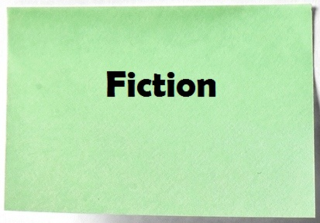 novel is like driving a car at night. You can only see as far as your headlights, but you can make the whole trip that way.” – E. L. Doctorow
novel is like driving a car at night. You can only see as far as your headlights, but you can make the whole trip that way.” – E. L. Doctorow
“Every novel should have a beginning, a middle, and an end.” – Peter De Vries
“To the composition of novels and romances, nothing is necessary but paper, pens, and ink, with the manual capacity of using them.” – Henry Fielding
“The historian records, but the novelist creates.” – E. M. Forster
“When writing a novel, that's pretty much entirely what life turns into: ‘House burned down. Car stolen. Cat exploded. Did 1500 easy words, so all in all it was a pretty good day.’” – Neil Gaiman
“I have a theory of my own about what the art of the novel is, and how it came into being....It happens because the storyteller's own experience...has moved him to an emotion so passionate that he can no longer keep it shut up in his heart.” – Lady Murasaki, “The Tale of Genji”
Need an editor? Having your book, business document or academic paper proofread or edited before submitting it can prove invaluable. In an economic climate where you face heavy competition, your writing needs a second eye to give you the edge. I can provide that second eye.
<A HREF="http://ws-na.amazon-adsystem.com/widg... Widgets</A>Related articles
 Oxford library hosts editor, cousin novelist
Oxford library hosts editor, cousin novelist Five Great Quotations about Writing SF
Five Great Quotations about Writing SF Place commas inside quotation marks
Place commas inside quotation marks Use consistent quotation mark, apostrophe style
Use consistent quotation mark, apostrophe style Five Great Quotations about the Power of Writing
Five Great Quotations about the Power of Writing
March 22, 2014
When is best time of the year to release a book?
Among the 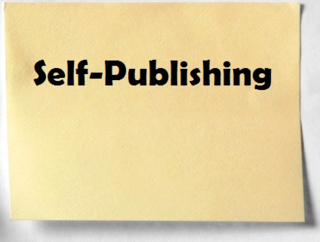 many questions an indie author faces is when to release a book. Big publishing houses obviously select dates for their book releases to maximize marketing efforts and hence sales, and those of us who are self-publishing should do the same. If not, your book will be lost among the hundreds of others published that day, simply because the potential interest for your book’s topic isn’t peaking.
many questions an indie author faces is when to release a book. Big publishing houses obviously select dates for their book releases to maximize marketing efforts and hence sales, and those of us who are self-publishing should do the same. If not, your book will be lost among the hundreds of others published that day, simply because the potential interest for your book’s topic isn’t peaking.
One way to approach a release date is to think in terms of when most book sales occur. Without a doubt, it’s during the Christmas holiday season, which now runs from Nov. 1 through Dec. 24. Well over a quarter and sometimes upwards to a third of a year’s book sales occur during this two-month period. Some writers prefer not to release their titles at this time, thinking there is too much competition, but the the sheer number of people purchasing books at this time of year as compared to any other week or month typically outweighs the downside of potentially being lost in the crowd.
Of course, some books simply wouldn’t sell as well at Christmas as during other times of the year, so you may want to approach your release date by thinking of seasonal tie-ins. The most obvious tie-ins center on holidays, such as books about ghosts for Halloween or love poetry for Valentine’s Day, but think beyond that. If writing a book about bipolar disorder, for example, why not time its release to May, which is Mental Health Awareness Month? Think also about the ebb and flow of people’s lives. Self-help books, for example, perform well in January as many try to fulfill their New Years’ Resolutions. In May and early June, many people pick up summer vacation reading.
Though less specific for a release date but useful in helping decide which book to write next, time your release date to an anniversary or other significant event. For example, 2015 marks the 50th anniversary of the Watts Riot in Los Angeles, the passage of Medicare and Medicaid, and the debut of “Tom and Jerry” on television. Any of those topics would make for a great book…and you can bet that there will be books released in 2015 on each of them. Such dates as “one year”, “10 years”, “25 years”, “50 years” and “100 years” will attract media interest to recall and review a subject.
Remember that once you establish a release date based on a tie-in, you’ll need to ensure there’s plenty of lead-in time to generate interest about the book. For example, if writing a book about soldiers’ memories of war for a Veterans’ Day release, you’ll want to have the title up for sale about four weeks before them, or around Oct. 11. That will allow mainstream media and bloggers plenty of time to develop and schedule story ideas that include your book or an interview with you as the author in advance of Veterans’ Day. Don’t forget that often new stories are done about a holiday in advance of rather than just on its actual date. This lead-in time also allows those who wish to purchase such books as a gift or to feed their own interests to locate and purchase your book before Nov. 11.
Need an editor? Having your book, business document or academic paper proofread or edited before submitting it can prove invaluable. In an economic climate where you face heavy competition, your writing needs a second eye to give you the edge. I can provide that second eye.
<A HREF="http://ws-na.amazon-adsystem.com/widg... Widgets</A>Related articles
 How to arrange a public book reading/signing
How to arrange a public book reading/signing Tighten writing by cutting begin fallacy
Tighten writing by cutting begin fallacy
March 21, 2014
Fix scene by employing black box analysis
One question 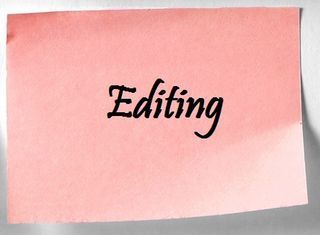 a number of writers have when editing their novel or short story is if a scene succeeds or not. Sometimes they feel the scene lacks importance, yet they hesitate to cut or revise as it’s tightly written with crisp dialogue or rib-splitting humor.
a number of writers have when editing their novel or short story is if a scene succeeds or not. Sometimes they feel the scene lacks importance, yet they hesitate to cut or revise as it’s tightly written with crisp dialogue or rib-splitting humor.
A solution for evaluating a scene’s importance is to employ a black box analysis. It’s a term coined by CFSW’s David Smith.
The analysis works like this: Isolate the scene by viewing it as a black box from which characters can leave and enter. Then ask yourself a few questions about the characters:
g What motivated each character to enter the black box (or scene)?
g Did each major character risk either gaining or losing something by entering the black box?
g Did each major character act to fulfill a goal while in the black box?
g Did each major character actually gain or lose something when they left the black box?
g Did each major character change at all because of what happened to them during their time in the black box?
Each of these questions can help you pinpoint the problem in a scene. For example, if a character had no motivation for entering the black box, perhaps they either should be written out of the scene or given a motivation for entering it. If a major character took no action to achieve a goal, perhaps the passage needs to be revised to ensure that they do.
If multiple problems are pinpointed, that’s a good sign that simply revising a couple of sentences of dialogue or adding a couple of sentences isn’t enough. Instead, rethink the scene and then rewrite it.
Need an editor? Having your book, business document or academic paper proofread or edited before submitting it can prove invaluable. In an economic climate where you face heavy competition, your writing needs a second eye to give you the edge. I can provide that second eye.
<A HREF="http://ws-na.amazon-adsystem.com/widg... Widgets</A>Related articles
 Five style issues to watch for in your story
Five style issues to watch for in your story Avoid card tricks in the dark when writing
Avoid card tricks in the dark when writing Create successful story by staging it
Create successful story by staging it Draft rarely perfect after first go-round
Draft rarely perfect after first go-round
March 20, 2014
How to embed fonts in a pdf of your manuscript
Sometimes when 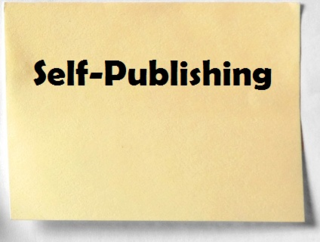 uploading a pdf of your formatted book to a print on demand company, such as CreateSpace, you’ll get a warning message that fonts are not embedded your file.
uploading a pdf of your formatted book to a print on demand company, such as CreateSpace, you’ll get a warning message that fonts are not embedded your file.
Most of the time, this won’t be a problem. To make the process easier, companies such as CreateSpace often simply will embed the fonts for you. If you’re using common, standard fonts such as Times Roman, all will be fine.
However, if using a specialty font that you downloaded from the Internet or created on your own, or if using nonstandard characters (such as checkmarks and bullet points), this may be problematic. Those fonts and characters will be replaced with default settings, and that almost certainly will mess up your layout or at least introduce goofy looking letters that make no sense at various spots in your manuscript (For example, bullet points might be replaced with the letter n or g).
If that occurs in your manuscript, you’ll want to embed the fonts in a pdf of your manuscript and upload that new version.
Embedding fonts in your manuscript is easy if using Microsoft Word:
>>Open the Microsoft Word document of your manuscript
>>Click “File” and “Save As”
>>Select .PDF as the file type
>>Check “Optimize for Standard” option
>>In the lower right side of this window, click the “Tools” dropdown arrow
>>Select “Save Options”
>>A new window will pop up; check “Embed all fonts in this file”
>>Right below it, uncheck “Do not embed common system fonts”
>>Click “OK”
>>Click “Save”
The pdf of your manuscript now has all of the fonts used in your Word document embedded in it. Upload this new pdf to your print on demand vendor.
Need an editor? Having your book, business document or academic paper proofread or edited before submitting it can prove invaluable. In an economic climate where you face heavy competition, your writing needs a second eye to give you the edge. I can provide that second eye.
<a href="http://ws-na.amazon-adsystem.com/widg... Widgets</a>Related articles
 How to use Track Changes on your manuscript
How to use Track Changes on your manuscript Use consistent quotation mark, apostrophe style
Use consistent quotation mark, apostrophe style Getting started with formatting your ebook
Getting started with formatting your ebook
March 19, 2014
Don’t learn this in stages: Fazed vs. phased
Hopefully you’ll  be able to learn in one quick shot the difference between the words fazed and phased.
be able to learn in one quick shot the difference between the words fazed and phased.
Fazed is a verb meaning to disturb or to cause one to feel disconcerted: Charlie was not fazed by his girlfriend’s temper-tantrum.
Phased is to carry out a plan in gradual steps: The new computer system will be phased in over the next several months.
If you can’t remember the difference, hopefully you’re editor won’t be fazed (er, bothered) by this.
Need an editor? Having your book, business document or academic paper proofread or edited before submitting it can prove invaluable. In an economic climate where you face heavy competition, your writing needs a second eye to give you the edge. I can provide that second eye.
&amp;amp;amp;amp;amp;amp;lt;A HREF="http://ws-na.amazon-adsystem.com/widg... Widgets&amp;amp;amp;amp;amp;amp;lt;/A&amp;amp;amp;amp;amp;amp;gt;
Related articles
 Time to get it right: Past vs. passed
Time to get it right: Past vs. passed Do the right thing: Altar vs. alter
Do the right thing: Altar vs. alter Strengthen writing by replacing adverbs
Strengthen writing by replacing adverbs Tighten writing by cutting begin fallacy
Tighten writing by cutting begin fallacy Five Great Quotations about Writing SF
Five Great Quotations about Writing SF
March 18, 2014
Maintain tension throughout your story
Any story 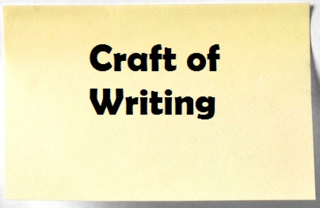 you tell by definition has a plot, characters, setting, point of view and theme. But to really make a story pop, an author has to interweave and play these elements against one another so that the story has tension.
you tell by definition has a plot, characters, setting, point of view and theme. But to really make a story pop, an author has to interweave and play these elements against one another so that the story has tension.
Tension is the force behind the need to find resolution. It stems from the hook that caught the reader in the opening lines, that there’s an interesting central problem to solve. The rest of the story needs to focus on solving that problem.
But the author can’t make the outcome – the resolution of the problem – obvious to the reader. The author should always leave open the possibility that the problem won’t be resolved. Of course, most readers know (or at least expect) that the problem will be resolved. By creating doubt, the writer causes the reader to wonder how the problem will be resolved. The greater this tension, the more likely the reader will stick with you through the story.
Generally, the best way to create doubt is to make the problem increasingly more difficult to resolve as the story continues.
Consider the tension created in what is perhaps the best “Star Trek: The Next Generation” episode, “The Best of Both Worlds, Part I”. The show opens with attacks on a Federation outpost and ship that appears to be a Borg invasion. Great anxiety ensues as Starfleet Command hastily organizes an armada as its own leaders admit they’re not ready for the Borg. The problem worsens as the Enterprise engages the Borg, begins to lose the battle and hides in a nebula. The Borg force the Enterprise out and abduct Captain Picard, leaving the crew in the hands of Commander Riker, who is doubtful of his own leadership abilities and finds himself at odds with the Borg expert, Lt. Cmdr. Shelby. Though the Enterprise is able to temporarily halt the Borg advance, an away team sent to retrieve Picard finds that he has been transformed into a Borg. As the away team reports this to Riker, Picard – as Locutus of Borg – orders the Enterprise to surrender, saying that everything Picard knows the Borg now know and that resistance is futile. Riker orders the Enterprise to fire, or for the crew to kill its beloved, former captain.
The story constantly leaves the viewer wondering how the Enterprise/Federation will overcome the Borg invasion as the situation for our heroes grows increasingly dire. By episode’s end (which was a season cliffhanger), apparently the only way to resolve the problem is for the crew to kill the series’ main character and hero, the man they are most loyal to.
Certainly the story’s settings – aboard the Borg ship, on a world where a colony has been decimated – are intriguing. Certainly the characters – Riker’s self-doubt, Picard’s transformation into Locutus – are fascinating. Certainly the plot – repelling an alien invasion – is interesting.
But combining and playing these elements off against one another to create tension – now that’s spellbinding.
Need an editor? Having your book, business document or academic paper proofread or edited before submitting it can prove invaluable. In an economic climate where you face heavy competition, your writing needs a second eye to give you the edge. I can provide that second eye.
Related articles
 Five basic elements make up a story
Five basic elements make up a story Make final words of your story count
Make final words of your story count
March 17, 2014
Editing client’s new book charts infant’s journey
A recent  editing client of mine, Carol Lee Ramie, has published her book “Jessica’s Journey.” A true story, Ramie describes the difficult pregnancy of her daughter and the days after in which her newborn granddaughter teeters on the brink of death. As one reviewer wrote of the book, “This is truly a story of inspiration, love, hope and, sadly, tragedy.” “Jessica’s Journey” is available online and due for release in paperback.
editing client of mine, Carol Lee Ramie, has published her book “Jessica’s Journey.” A true story, Ramie describes the difficult pregnancy of her daughter and the days after in which her newborn granddaughter teeters on the brink of death. As one reviewer wrote of the book, “This is truly a story of inspiration, love, hope and, sadly, tragedy.” “Jessica’s Journey” is available online and due for release in paperback.
Need an editor? Having your book, business document or academic paper proofread or edited before submitting it can prove invaluable. In an economic climate where you face heavy competition, your writing needs a second eye to give you the edge. I can provide that second eye.
&amp;amp;amp;amp;amp;amp;lt;A HREF="http://ws-na.amazon-adsystem.com/widg... Widgets&amp;amp;amp;amp;amp;amp;lt;/A&amp;amp;amp;amp;amp;amp;gt;Related articles
 Editing client releases baseball novel
Editing client releases baseball novel Prepare for good writing: All ready vs. already
Prepare for good writing: All ready vs. already Everywhere a sign and a line: Cue vs. queue
Everywhere a sign and a line: Cue vs. queue Five Great Quotations about Characters in a Story
Five Great Quotations about Characters in a Story Out, error, out! Cleanup vs. clean up vs. clean-up
Out, error, out! Cleanup vs. clean up vs. clean-up
March 16, 2014
Five Great Quotations about Journaling
“Advice to 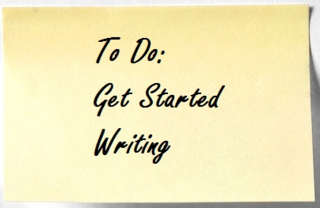 Young Journal Keepers. Be lenient with yourself. Conceal your worst faults, leave out your most shameful thoughts, actions, and temptations. Give yourself all the good and interesting qualities you want and haven't got. If you should die young, what comfort would it be to your relatives to read the truth and have to say: It is not a pearl we have lost, but a swine?” ― Rosamond Lehmann
Young Journal Keepers. Be lenient with yourself. Conceal your worst faults, leave out your most shameful thoughts, actions, and temptations. Give yourself all the good and interesting qualities you want and haven't got. If you should die young, what comfort would it be to your relatives to read the truth and have to say: It is not a pearl we have lost, but a swine?” ― Rosamond Lehmann
“Exercise the writing muscle every day, even if it is only a letter, notes, a title list, a character sketch, a journal entry. Writers are like dancers, like athletes. Without that exercise, the muscles seize up.” – Jane Yolen
“Write down the thoughts of the moment. Those that come unsought for are commonly the most valuable.” – Francis Bacon
“Journal writing is a voyage to the interior.” ― Christina Baldwin
“These handwritten words in the pages of my journal confirm that from an early age I have experienced each encounter in my life twice: once in the world, and once again on the page.” ― Terry Tempest Williams
Need an editor? Having your book, business document or academic paper proofread or edited before submitting it can prove invaluable. In an economic climate where you face heavy competition, your writing needs a second eye to give you the edge. I can provide that second eye.
&amp;amp;amp;amp;amp;amp;amp;amp;amp;amp;amp;amp;amp;amp;amp;amp;amp;amp;amp;amp;amp;amp;lt;A HREF="http://ws-na.amazon-adsystem.com/widg... Widgets&amp;amp;amp;amp;amp;amp;amp;amp;amp;amp;amp;amp;amp;amp;amp;amp;amp;amp;amp;amp;amp;amp;lt;/A&amp;amp;amp;amp;amp;amp;amp;amp;amp;amp;amp;amp;amp;amp;amp;amp;amp;amp;amp;amp;amp;amp;gt;Related articles
 Five great quotations about poetry
Five great quotations about poetry Five Great Quotations about the Power of Writing
Five Great Quotations about the Power of Writing Use consistent quotation mark, apostrophe style
Use consistent quotation mark, apostrophe style Place commas inside quotation marks
Place commas inside quotation marks
March 15, 2014
Editing client publishes first book, on Parkinson’s
An editing  client of mine from this winter, Steven Keller, has published his first book, “Parkinson's: Hidden Truths.” Written not by a doctor or a science reporter but by a man who’s lived with the disease for years, Keller shares his personal story of dealing with Parkinson’s, describes causes of and treatments for the disease, and examines how you still can lead a full life by adjusting to its physical and emotional strains. “Parkinson's: Hidden Truths” is available online as a paperback or ebook.
client of mine from this winter, Steven Keller, has published his first book, “Parkinson's: Hidden Truths.” Written not by a doctor or a science reporter but by a man who’s lived with the disease for years, Keller shares his personal story of dealing with Parkinson’s, describes causes of and treatments for the disease, and examines how you still can lead a full life by adjusting to its physical and emotional strains. “Parkinson's: Hidden Truths” is available online as a paperback or ebook.
Need an editor? Having your book, business document or academic paper proofread or edited before submitting it can prove invaluable. In an economic climate where you face heavy competition, your writing needs a second eye to give you the edge. I can provide that second eye.
Amazon.com WidgetsRelated articles
 Editing client publishes alcohol addiction book
Editing client publishes alcohol addiction book Editing client releases first literary novel
Editing client releases first literary novel Aim to simultaneously publish paperback, ebook
Aim to simultaneously publish paperback, ebook Everywhere a sign and a line: Cue vs. queue
Everywhere a sign and a line: Cue vs. queue
March 14, 2014
Client publishes short story, poetry collection
E. Robb 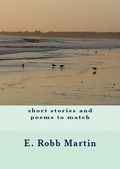 Martin, an editing client of mine from this winter, has published his second book, “Short Stories and Poems to Match.” The book is a collection of essays and poems that capture the history of a bygone era, from living in California’s farm labor camps and to going to the local drive-in (without the parents). A number of the pieces are about the importance and meaning of family. “Short Stories and Poems to Match” is available online as an ebook with a paperback about to be released.
Martin, an editing client of mine from this winter, has published his second book, “Short Stories and Poems to Match.” The book is a collection of essays and poems that capture the history of a bygone era, from living in California’s farm labor camps and to going to the local drive-in (without the parents). A number of the pieces are about the importance and meaning of family. “Short Stories and Poems to Match” is available online as an ebook with a paperback about to be released.
Need an editor? Having your book, business document or academic paper proofread or edited before submitting it can prove invaluable. In an economic climate where you face heavy competition, your writing needs a second eye to give you the edge. I can provide that second eye.
&amp;amp;amp;amp;lt;A HREF="http://ws-na.amazon-adsystem.com/widg... Widgets&amp;amp;amp;amp;lt;/A&amp;amp;amp;amp;gt;Related articles
 Editing client releases novel based on true story
Editing client releases novel based on true story Everywhere a sign and a line: Cue vs. queue
Everywhere a sign and a line: Cue vs. queue Aim to simultaneously publish paperback, ebook
Aim to simultaneously publish paperback, ebook Five great quotations about poetry
Five great quotations about poetry



